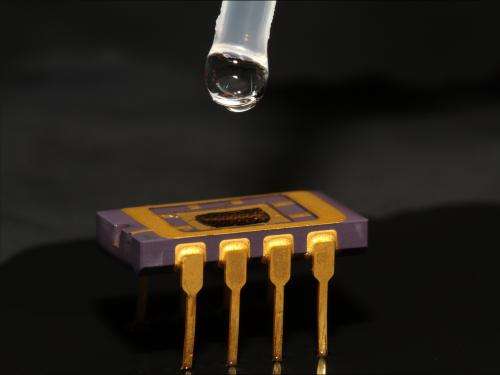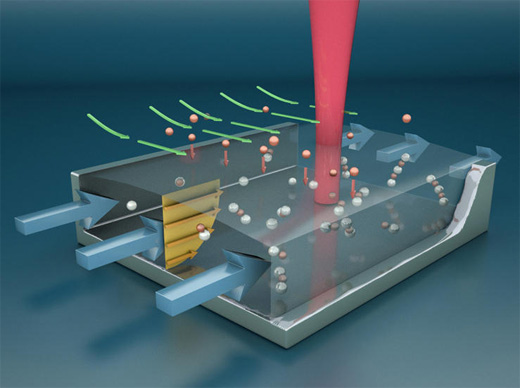Nano-electric sensor - plasmonic
Researcher and author: Dr. ( Afshin Rashid)
Note: For nanosensors, a nanosensitivity process to plasmonia involves the complex interaction of three elements between photons, molecules, and nanostructures . , Nanopores, nanotubes and nanoparticles, to enhance advanced surface Raman spectroscopy and sensitivity fluorescence in plasmonic amplified nanosensor based on multilayer nanoparticles and , detection for many small sections or Poorly adsorbed molecules are difficult in plasmonic nanosensors.
The performance of floating particles for plasmon-based amplified nanosensor based on multilayer nanoparticles in the interaction between molecules and nanostructured surfaces. Based on the pathway for colloidal aggregation , poorly adsorbed molecules cannot be adsorbed on a metal surface during rapid aggregation. Therefore, this natural defect causes these nanosensors to not show significant sensitivity. On a solid surface with precision nanoparticles, immersion of the nanosensor substrate in the solution containing the analyte may result in the adsorption of a homogeneous molecule. However, the absorption time (for example, a few hours) goes far beyond the practical time intervals. Instead, by drying the droplet containing the analyte on a substrate, the distribution of the molecule on the plasmon-amplified nanosensor based on multi-layer nanoparticles may face the issue of uniformity.
Localization of analytes to high efficiency plasmonic hotspots is of great importance in increasing the sensitivity of plasmonic nanosensors. The effect of the coffee ring is a very common phenomenon, and its nature is that the capillary flow out of the center of the droplet droplets dispersed droplets to the edge, which continues to evaporate . In many detections based on plasmonic nanosensors, loop formation may result in a completely uncontrolled distribution of colloidal nanoparticles and the target molecule, resulting in declining signal uniformity and lower sensitivity in floating particle performance for nano sensors. ) Enhanced plasmon creates nanoparticles based on multiple monolayers. Plasmonic-based nanosensors have received considerable attention, even at the single-molecule level, for their extreme sensitivity. At present, however, plasmon-amplified nanosensors have not achieved excellent performance in practical applications, and their detection at femutomolar or ethmular concentrations is very challenging.
Conclusion :
For nanosensors, a nanosensitivity process to plasmonia involves the complex interaction of three elements between photons, molecules, and nanostructures . , Nanopores, nanotubes and nanoparticles, to enhance advanced surface Raman spectroscopy and sensitivity fluorescence in plasmonic amplified nanosensor based on multilayer nanoparticles and , detection for many small sections or Poorly adsorbed molecules are difficult in plasmonic nanosensors.
Researcher and author: Dr. ( Afshin Rashid)
PhD in Nano-Microelectronics




